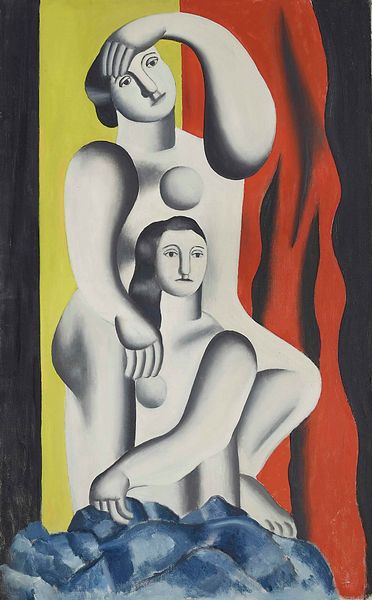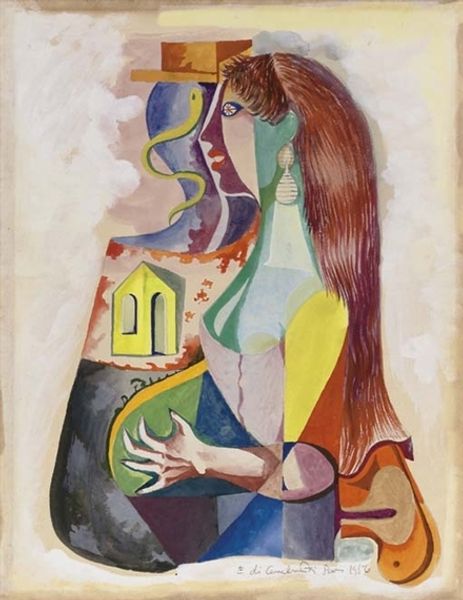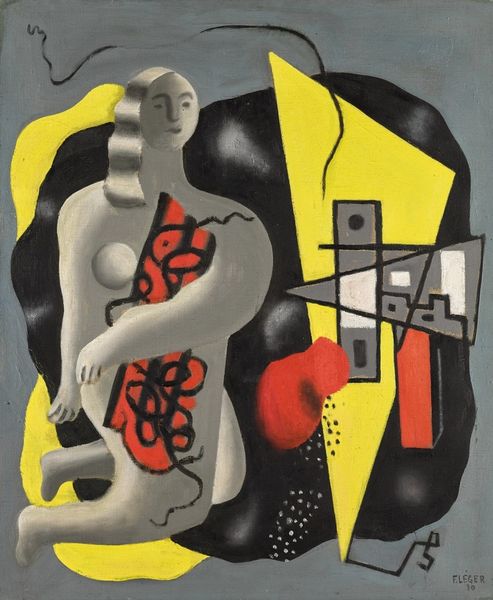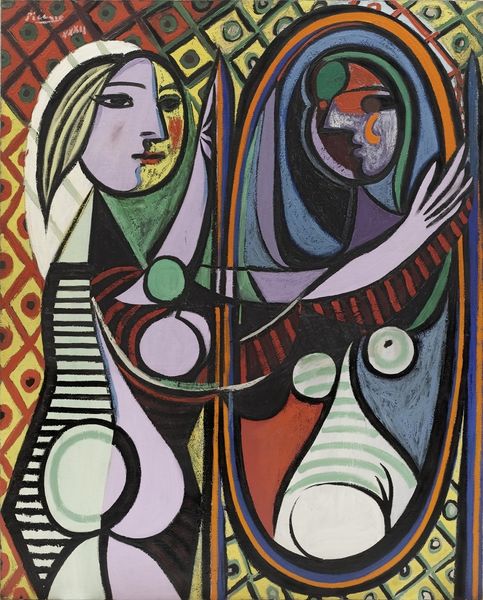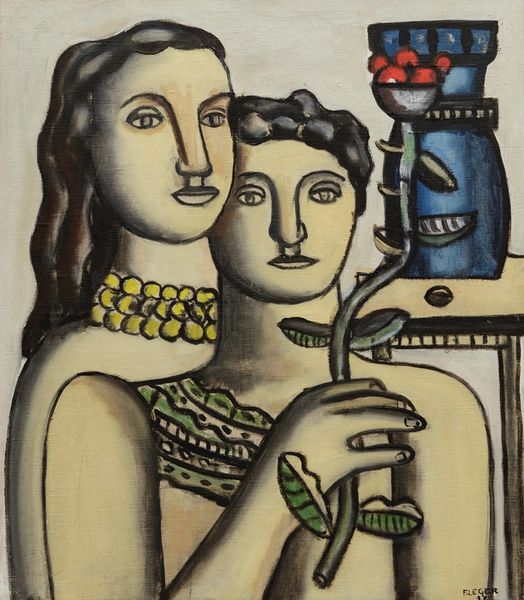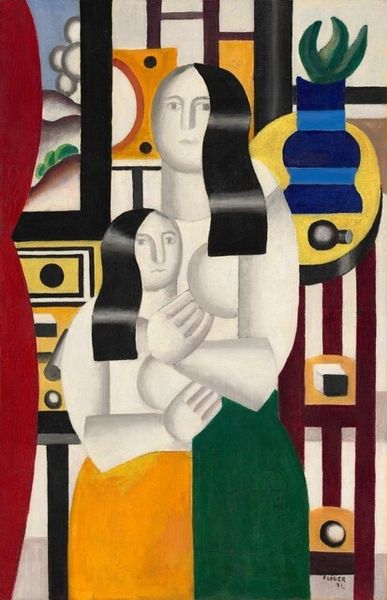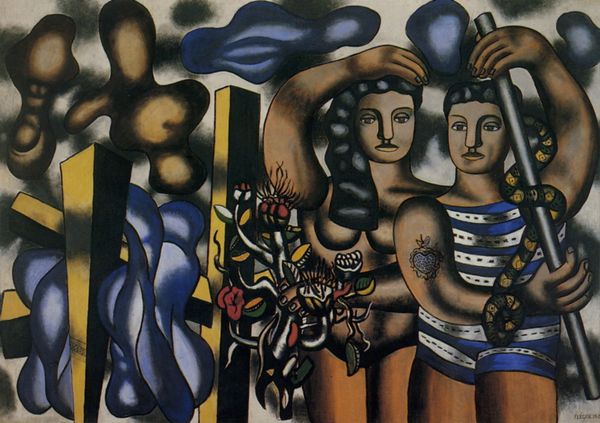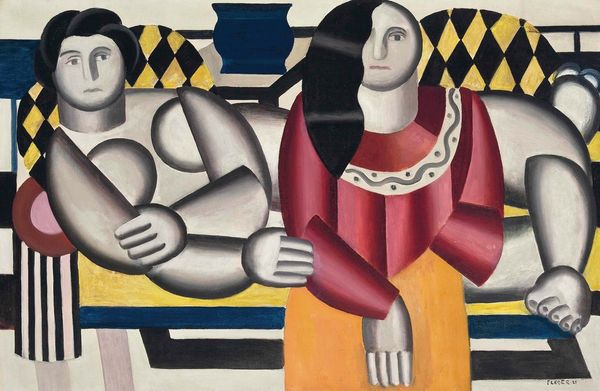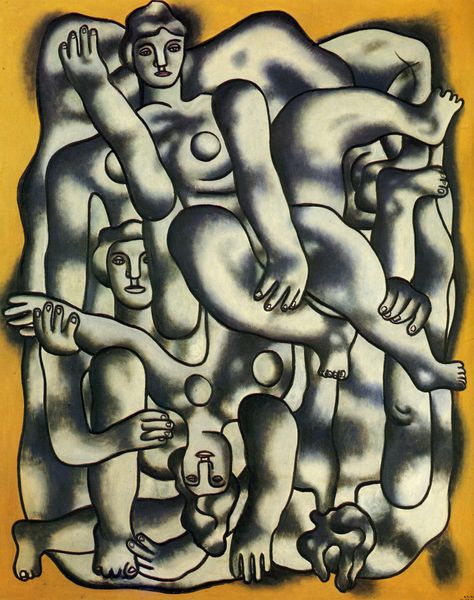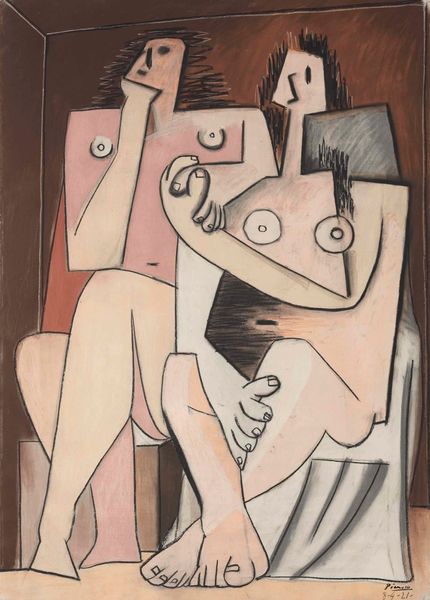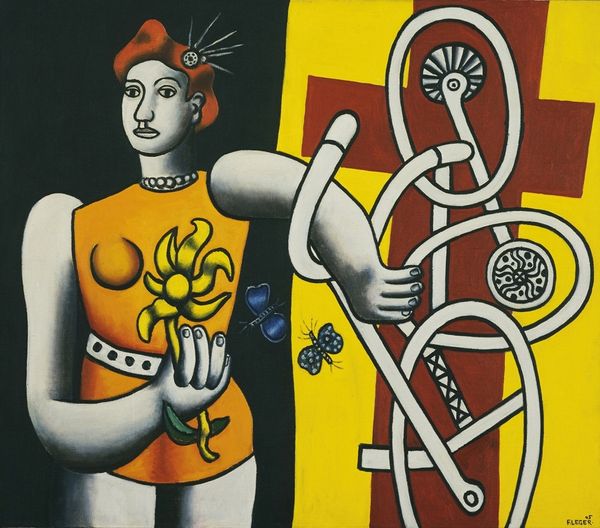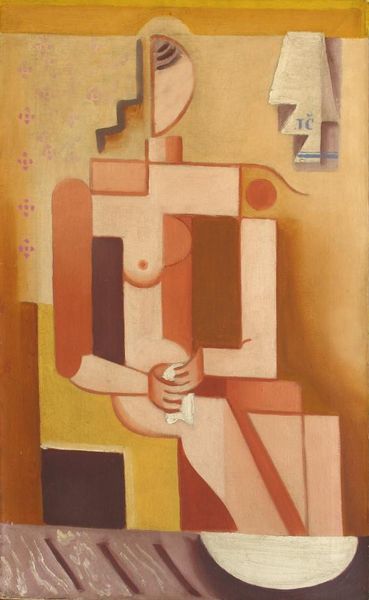
painting, oil-paint, multiple
#
portrait
#
cubism
#
painting
#
oil-paint
#
figuration
#
portrait reference
#
geometric
#
multiple
#
history-painting
#
modernism
Copyright: Modern Artists: Artvee
Editor: This is Fernand Léger's "Deux figures," painted in 1929 using oil paint. The contrast in skin tones is quite striking, and creates a kind of push and pull visually. How do you interpret this work? Curator: The pairing of contrasting figures—one rendered almost like a classical statue, the other more lifelike in color—speaks to Léger’s ongoing interest in reconciling tradition with modernity. He was deeply engaged in the political debates around art's role in a rapidly changing society. How do you think that tension between classical and modern plays out? Editor: Well, the geometric forms feel very modern, but you're right, the statue-like figure nods to classical art. The way they’re intertwined, almost dependent, seems significant. Curator: Exactly. Léger, in the interwar period, saw art as vital for social reconstruction, an instrument to create a shared visual language. Consider the monumental scale he often employed. How might this idealised vision have been received in the politically charged climate of the late 1920s? Editor: It's interesting to think about art as trying to create unity in such a divided time. It's more complex than just aesthetics. I’ll have to consider this in light of how museums present modernism today. Curator: Indeed. These choices - the visual language he used and how and where the work was shown – are as crucial as the artist's intent. Context truly shapes our understanding. Editor: I’m definitely going to look at Léger's other work with a different perspective now, thinking about its place in the larger social landscape. Curator: Excellent. Keep questioning the "why" behind the art and the institutions presenting it. It changes everything.
Comments
No comments
Be the first to comment and join the conversation on the ultimate creative platform.

